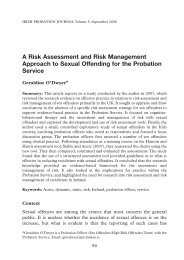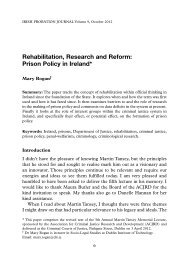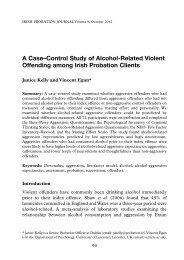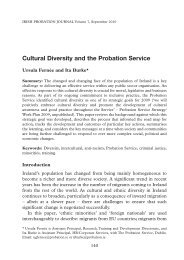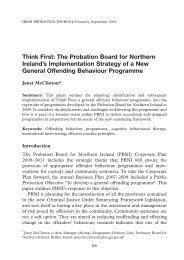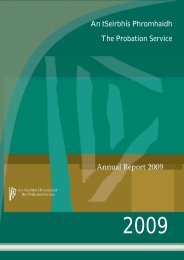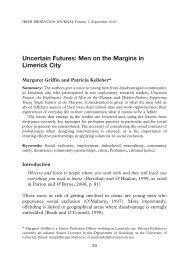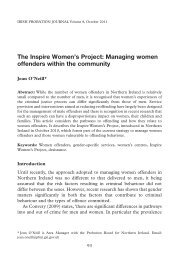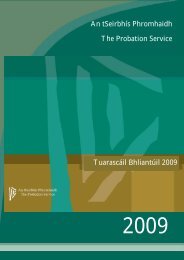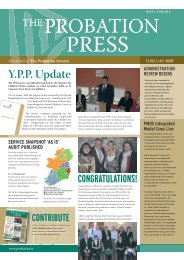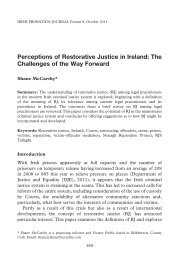Homeless Offenders Strategy Team (HOST) - The Probation Service
Homeless Offenders Strategy Team (HOST) - The Probation Service
Homeless Offenders Strategy Team (HOST) - The Probation Service
You also want an ePaper? Increase the reach of your titles
YUMPU automatically turns print PDFs into web optimized ePapers that Google loves.
<strong>HOST</strong> Business <strong>Strategy</strong> 2004-2007<br />
Section 2<br />
Introduction and Background<br />
<strong>The</strong>re is a variety of routes by which people may become homeless.<br />
While links between a range of variables and homelessness have been<br />
established, there is little if any agreement on causality. Poverty, history<br />
of substitute care, experience of abuse or neglect, family conflict, age at<br />
first becoming homeless, social isolation, substance misuse, mental ill<br />
health and imprisonment are significant factors that can contribute to a<br />
person becoming homeless. <strong>The</strong> relationship between crime and<br />
homelessness is also complex. For those who come in contact with the<br />
criminal justice system through their offending, that contact and<br />
especially incarceration at any point in a person’s life, can increase the<br />
likelihood of their becoming homeless. 1 A significant percentage of<br />
offenders are already homeless or at risk of homelessness at the point of<br />
contact with criminal justice agencies, including at the point of<br />
incarceration. It is also recognised that homelessness in itself can be an<br />
element in a compound of social factors which may contribute to<br />
offending. Many homeless people have contact with the criminal justice<br />
system, often for a succession of relatively minor offences. <strong>The</strong>y may<br />
also have other problems such as substance misuse and mental health<br />
difficulties, which are likely to place them at increased risk of further<br />
offending and homelessness. Offending behaviour may thus both result<br />
from and contribute to homelessness.<br />
<strong>The</strong>re is evidence that being discharged from prison can be one of the<br />
triggers leading to homelessness. Carlisle’s (1996) 2 findings indicated<br />
that 40% of a sample of prisoners expected to be homeless on release,<br />
while less than 50% reported being able to return to the accommodation<br />
they had prior to imprisonment. Paylor (1992) 3 had also documented<br />
similar findings: 40% of that sample were homeless on discharge from<br />
1 For example, see Carlen, P. (1983) Women’s Imprisonment London: Routledge;<br />
Piliavin, I., Sosin, M., Westerfelt, A. and Matsueda, R. (1993) ‘<strong>The</strong> Duration of<br />
<strong>Homeless</strong> Careers – An Exploratory Study,’ Social <strong>Service</strong> Review, 67 (4), 576-598<br />
and Yanetta, A., Third, H. and Anderson, A. (1999) National Monitoring and Interim<br />
Evaluation of the Rough Sleepers Initiative in Scotland, Edinburgh: Scottish<br />
Executive Central Research Unit.<br />
2 Carlisle, J. (1996) <strong>The</strong> Housing Needs of Ex-Prisoners, Centre for Housing Policy,<br />
University of York.<br />
3 Paylor, I. (1992) <strong>Homeless</strong>ness and Ex-<strong>Offenders</strong>: A Case for Reform, University of<br />
East Anglia, Social Work Monographs.<br />
6



